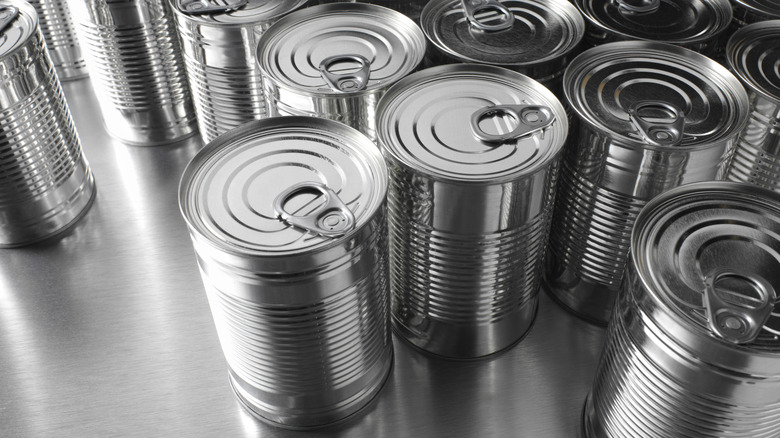The Scientific Reason Canned Goods Are Always Cylindrical
Walk down the aisle of any grocery store and you'll be met with the monotonous pattern of cylindrical, canned goods. From soda to soup, cylindrical cans can be seen everywhere in grocery stores, gas stations, and vending machines. The traditional metal can that we are used to today was invented in 1810 by Peter Durand, who patented the design of iron cans coated in tin for preserving food. This design took off due to its durability and ease of transportation. The can design had little evolution since then, but for a good reason.
The cylindrical shapes of cans are a major benefit when manufacturing products. The cylindrical shape is the perfect cross-section of using the least amount of material but being able to fit the most product into shipment boxes and on store shelves. A spherical shape is inefficient for packaging, and a cubical shape is inefficient in terms of material use. The cylindrical shape is just right by using a rounded top (like a sphere) and elongated sides (like a cube). This cylindrical shape is also critical for withstanding pressure. This shape can withstand up to 90 lbs of pressure, making them a durable product for day-to-day life.
The evolution of the cylindrical can
When the metal, cylindrical cans first hit the market, they featured flat tops that you would have to pierce to open. These flat tops — named for the design of the can — then evolved into the first form of the tabbed cans we are familiar with today. The tab was originally designed to be pulled off the can and peeled a piece of metal with it. This, of course, changed into the tab that folds the piece of metal down. This design originally centered around soda beverages but has been used by other products as well. Of course, not all cans feature this design; it mostly depends on the contents of the can.
The entire evolution of the can is based on engineering and manufacturing ability. Another way we have seen the can evolve is the use of material. Tin is relatively hard to source, so modern cans have moved away from the steel tin-coated material and shifted towards using aluminum. In addition to this, some cans come with a thin plastic lining. This plastic lining ensures there is no reaction between the edible contents of the can and the metal material, offering a safer food and drink experience. This also keeps food and drink tasting fresher for longer as well.

